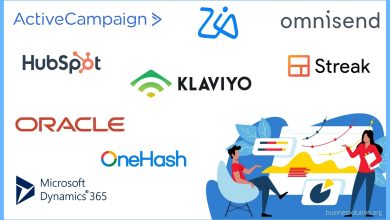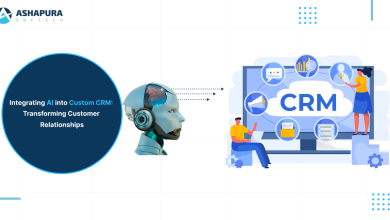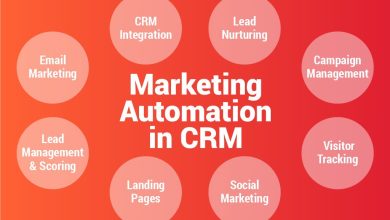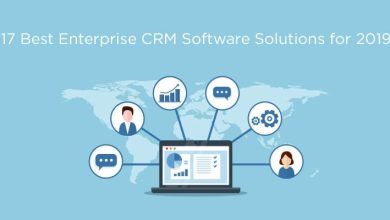Marketing Automation with CRM The Ultimate Guide for Smart Business Growth
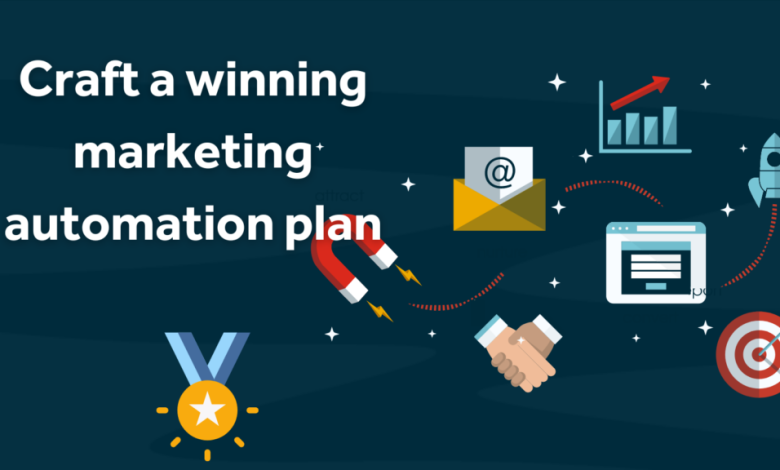
Marketing Automation with CRM: The Ultimate Guide to Automating Your Marketing and Sales invites you to step into the future of business growth, where technology and strategy work hand in hand to drive better results. Whether you’re a business owner, marketer, or sales professional, this guide provides the essential tools and insights to streamline workflows, boost efficiency, and elevate your customer experiences.
By bringing together marketing automation and CRM systems, organizations can seamlessly connect marketing and sales activities, from lead generation and nurturing to closing deals and ongoing engagement. With a focus on features like automated workflows, segmentation, lead scoring, and data-driven personalization, this guide Artikels actionable steps and practical tips to help you optimize every stage of your marketing and sales funnel. Explore how analytics, integration, and AI-driven capabilities can transform your approach and set your team up for long-term success.
Introduction to Marketing Automation with CRM
In today’s fast-paced digital landscape, businesses of all sizes are turning to technology-driven solutions to streamline their operations and improve their bottom line. One major development in this space is the integration of marketing automation with Customer Relationship Management (CRM) systems. By combining these powerful tools, companies can enhance their marketing and sales efforts, improving efficiency and delivering a more personalized customer experience.
Marketing automation refers to the use of software platforms and technologies designed to automate repetitive marketing tasks such as email campaigns, social media posting, ad management, and lead nurturing. When these automation tools are synchronized with CRM systems, which store and manage detailed customer data, businesses gain a holistic view of the customer journey—from initial contact to sales conversion and beyond. This integration empowers organizations to create seamless workflows, break down silos between marketing and sales teams, and drive more meaningful engagement.
Core Functions of Marketing Automation
Marketing automation platforms offer a wide range of features that simplify and enhance marketing activities. These solutions can manage multiple marketing channels and help teams engage prospects at the right moment with relevant content.
- Email campaign automation that triggers personalized emails based on user behavior and segmentation.
- Lead scoring and nurturing workflows, which prioritize prospects for sales teams and provide tailored follow-ups.
- Multi-channel campaign management, covering social media, digital ads, and SMS marketing.
- Data analytics and reporting tools for tracking campaign performance, customer engagement, and ROI.
Integration of Marketing Automation and CRM Systems
Integrating marketing automation with CRM systems connects marketing and sales data, enabling a unified approach to customer management. This connection ensures that every interaction is tracked, measured, and used to inform future strategies.
By combining these technologies, companies can synchronize contact lists, segment audiences more effectively, and send sales-ready leads directly to sales representatives. For example, when a potential customer fills out a web form, their information is automatically entered into the CRM, assigned to the appropriate sales pipeline, and enrolled in a relevant nurturing campaign.
“Seamless integration between marketing automation and CRM transforms scattered data into actionable insights, enabling teams to work smarter and deliver personalized experiences at scale.”
Benefits of Unified Marketing and Sales Workflows through CRM
When marketing automation and CRM systems work together, organizations realize significant advantages across their marketing and sales operations.
Efficient collaboration between departments is fostered by the sharing of real-time customer insights, ensuring that both teams are aligned on strategy and objectives. Automated processes reduce manual workloads, minimize human error, and enable staff to focus on high-value tasks such as relationship building and creative campaign development.
- Enhanced lead management, allowing for more precise tracking and prioritization of prospects.
- Faster sales cycles, as qualified leads are quickly handed off from marketing to sales with full context.
- Consistent messaging across touchpoints, creating a cohesive brand experience for customers.
- Improved forecasting and performance measurement through unified analytics dashboards.
- Personalized engagement, as customer data informs targeted content and timely outreach.
Real-world implementations by companies like HubSpot, Salesforce, and Zoho CRM demonstrate significant gains in lead conversion rates and customer retention. For instance, a 2022 Salesforce report indicated that businesses with integrated marketing automation and CRM systems achieved up to 30% higher sales productivity, highlighting the tangible benefits of this unified approach.
Core Features of Marketing Automation in CRM Platforms
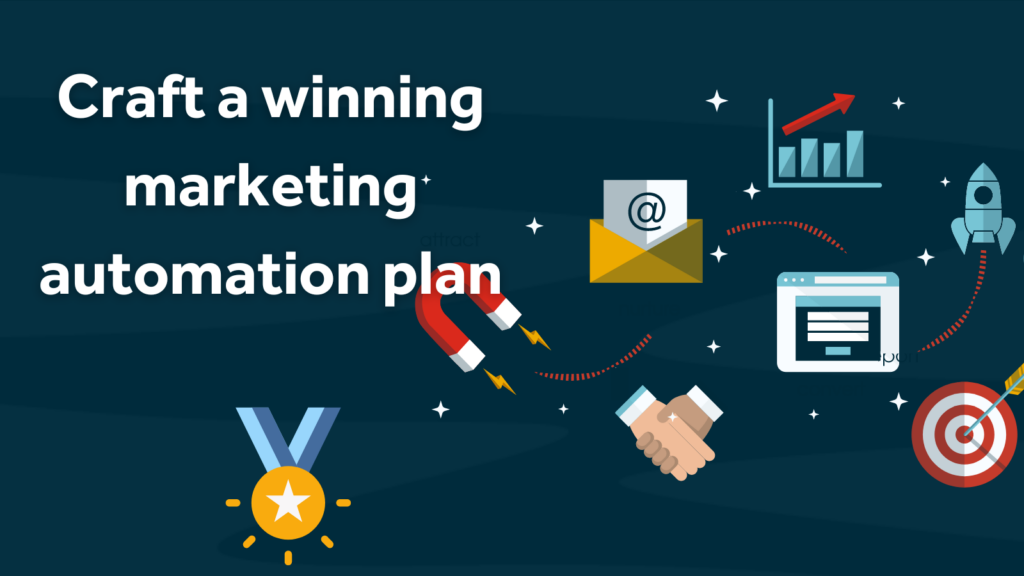
Marketing automation in CRM platforms brings together powerful tools to streamline lead management, enhance customer engagement, and drive sales efficiency. These platforms combine data-driven insights with automated processes, making it easier for marketers and sales teams to nurture prospects, personalize outreach, and measure campaign performance with precision.
As businesses increasingly rely on CRM platforms for both sales and marketing orchestration, understanding the core features of marketing automation becomes essential. By leveraging these features, organizations can optimize customer journeys, boost productivity, and gain a competitive edge through smart automation.
Essential Features: Lead Scoring, Segmentation, and Automated Workflows
Modern CRM platforms have evolved to include a suite of automation capabilities tailored for growing businesses. Three foundational features—lead scoring, segmentation, and automated workflows—form the backbone of effective marketing automation strategies.
- Lead Scoring: This feature allows teams to assign numeric values to leads based on demographic data and behavioral signals, such as website visits or email interactions. High-scoring leads are prioritized for sales, ensuring efforts focus on those most likely to convert.
- Segmentation: Segmenting contacts enables marketers to group audiences by criteria like industry, job title, purchase history, or engagement level. This targeted approach results in more relevant communications and improved campaign performance.
- Automated Workflows: Automated workflows streamline repetitive tasks by setting up triggers and actions—such as sending follow-up emails or updating lead statuses—based on user behaviors or data changes within the CRM.
Feature Comparison across Major CRM Platforms
Leading CRM solutions, such as Salesforce, HubSpot, Zoho CRM, and Microsoft Dynamics 365, offer distinct automation capabilities. The table below highlights how these platforms compare regarding core marketing automation features:
| Platform | Lead Scoring | Segmentation | Automated Workflows |
|---|---|---|---|
| Salesforce | Advanced AI-based scoring via Einstein | Dynamic segmentation using Lists & Reports | Flow Builder for complex automation |
| HubSpot | Customizable score properties | List segmentation with behavioral filters | Visual workflow editor with templates |
| Zoho CRM | Rule-based and predictive scoring | Tagging and filter-based segmentation | Blueprints and macros for automation |
| Microsoft Dynamics 365 | Automated scoring models with AI insights | Advanced search and dynamic lists | Power Automate integration |
Advanced Automation Capabilities: Behavioral Triggers and Event Tracking
Beyond the basics, advanced automation features have transformed how organizations engage and convert prospects. These capabilities empower platforms to react to real-time user actions and create sophisticated, personalized experiences at scale.
Effective behavioral triggers and event tracking can automatically initiate actions such as sending tailored offers, assigning leads to sales reps, or updating CRM records based on specific interactions. The following points Artikel the most impactful advanced automation features:
- Behavioral triggers activate workflows when users complete key actions like email opens, webinar sign-ups, or abandoned carts, allowing for timely and relevant follow-ups.
- Event tracking monitors detailed user activity across digital assets (e.g., website clicks, form submissions, app usage), providing insights for hyper-personalized engagement.
- Multichannel automation orchestrates touchpoints across email, SMS, social media, and in-app messaging, supporting seamless cross-platform journeys.
- Predictive analytics leverage machine learning to forecast outcomes, such as lead conversion likelihood, enabling proactive campaign adjustments.
- Dynamic content personalization adapts marketing messages and offers in real time, based on user profiles and recent behaviors.
“Automation in CRM platforms is not just about saving time—it’s about delivering the right message to the right person, at the exact moment they’re ready to act.”
Setting Up Automated Marketing Campaigns
Launching automated marketing campaigns within a CRM system is a strategic way to ensure timely, relevant, and consistent communication with your audience. By integrating automation into your CRM, you can nurture leads more efficiently, personalize outreach, and optimize your marketing efforts for better results. The following sections break down the essential steps and best practices for designing, implementing, and refining automated email campaigns using a CRM platform.
Designing and Implementing Automated Email Campaigns in CRM
To effectively set up automated email campaigns, a structured approach within your CRM system is essential. The process involves multiple stages, from initial planning to ongoing optimization.
- Define Campaign Objectives and Segmentation: Start by outlining clear goals for your campaign, such as increasing lead engagement, promoting a product, or onboarding new customers. Use CRM data to segment your audience based on criteria like behavior, purchase history, or demographics.
- Develop Content and Workflow Logic: Draft personalized email content and map out the campaign workflow, specifying trigger events (such as sign-ups or abandoned carts) and branching logic for different user actions.
- Select Automation Triggers and Actions: Configure the CRM to respond to user behavior, such as opening an email, clicking a link, or reaching a milestone, by sending appropriate follow-up messages or moving contacts between workflows.
- Integrate Dynamic Content and Personalization: Leverage merge tags, conditional content blocks, and user data from the CRM to customize messages in real-time.
- Set Up Testing and Quality Assurance: Preview emails, test automation sequences, and ensure deliverability by sending test emails to team members before launch.
- Launch Campaign and Monitor Performance: Activate the campaign and use CRM analytics to track metrics such as open rates, click-through rates, and conversions.
- Iterate Based on Insights: Regularly review performance data and adjust campaign elements, such as subject lines or call-to-actions, to improve results.
Best Practices for Personalization and Dynamic Content
Incorporating personalization and dynamic content significantly increases the effectiveness of automated campaigns. The following best practices help marketers deliver relevant messages that resonate with each recipient.
Personalized and dynamic content ensures messages stand out in crowded inboxes and drives higher engagement rates. By aligning content with recipient preferences and behaviors, marketers create a more compelling user experience.
- Leverage first-party CRM data such as name, purchase history, and browsing behavior to tailor email greetings and recommendations.
- Use dynamic content blocks to display different product offers or information based on recipient segments.
- Incorporate behavioral triggers (e.g., cart abandonment, product views) to send timely and contextually relevant messages.
- Maintain consistent tone and branding while adapting message details to the audience’s location or lifecycle stage.
- Regularly audit personalization tokens and logic to prevent errors such as missing names or incorrect recommendations.
- Ensure privacy compliance by only using data with proper consent and providing clear unsubscribe or preference management options.
“Personalization is no longer a luxury—it’s an expectation. Campaigns that use advanced personalization see up to 20% higher conversion rates compared to generic messaging.” — Salesforce Marketing Cloud, 2023
Step-by-Step A/B Testing within Automated Workflows
A/B testing, or split testing, is a critical method for optimizing automated campaigns in CRM systems. It allows marketers to compare different elements and choose the best-performing versions based on actual user responses.
Implementing A/B testing within an automated workflow involves setting up controlled experiments to determine which content variations resonate most with your audience. This structured approach leads to continuous improvement and measurable gains in campaign performance.
- Identify the Element to Test: Choose a single variable, such as the subject line, email copy, or call-to-action button, to isolate its impact on engagement.
- Create Variations: Develop two or more versions of the selected element. For instance, try different subject lines or layouts.
- Configure the Split in CRM Automation: Use the CRM’s workflow tools to randomly assign contacts into separate groups that will receive each version.
- Set Measurement Criteria: Define success metrics such as open rate, click rate, or conversion rate, and determine the sample size for each test group.
- Launch the Test: Activate the automated workflow and allow contacts to move through the test variations as they trigger the campaign.
- Analyze Results: Once a statistically significant sample has been reached, review the CRM analytics to compare the performance of each version.
- Apply Learnings to Future Campaigns: Implement the winning variation across the broader audience and document insights for ongoing campaign optimization.
For example, a B2B software company ran an A/B test comparing two onboarding email subject lines through their CRM. The version that included the company’s name and a benefit statement saw a 15% higher open rate, influencing all future onboarding campaigns.
“Continuous experimentation through A/B testing is the cornerstone of data-driven marketing automation. Small tweaks can yield substantial improvements in engagement and ROI.” — HubSpot State of Marketing Report, 2024
Lead Management and Nurturing with CRM Automation
Marketing automation becomes truly powerful when it seamlessly integrates with CRM systems to capture, qualify, and nurture leads at scale. This synergy ensures that no potential customer falls through the cracks and that each lead receives timely, personalized engagement throughout their journey.
Modern CRM platforms offer robust automation capabilities to manage leads from the moment they enter the funnel to their conversion into loyal customers. Automated workflows can segment, score, and nurture leads based on real-time behaviors and profile data, ensuring a more efficient and effective sales process.
Automated Lead Capture, Qualification, and Nurturing Processes
Automating lead management streamlines the process of gathering and evaluating new contacts, ensuring your team can focus on the most promising prospects. Here’s how automation facilitates each phase:
- Lead Capture Automation: Forms on websites, landing pages, and social channels automatically feed contact information into the CRM, triggering immediate follow-up actions.
- Lead Qualification: Automated workflows assess each lead based on predefined criteria—such as job title, company size, and engagement level—to determine sales readiness.
- Lead Nurturing: Personalized emails, educational content, and targeted offers are delivered automatically based on the lead’s stage and behavior, keeping prospects engaged without manual intervention.
Lead Lifecycle Stages and Automated Actions
It’s crucial to align automation with the lifecycle stage of each lead. Below is an HTML table that maps typical lead stages to recommended automated actions, enabling clear and structured processes.
| Lead Lifecycle Stage | Automated Actions | Example Scenario |
|---|---|---|
| New Lead |
– Auto-respond email – Assign lead owner – Enroll in welcome sequence |
A visitor downloads an eBook and instantly receives a welcome email, with their details routed to the appropriate sales rep. |
| Marketing Qualified Lead (MQL) |
– Lead scoring update – Add to nurturing drip campaign – Trigger educational content send |
A contact visits pricing pages and attends a webinar, boosting their score and entering a drip series about product features. |
| Sales Qualified Lead (SQL) |
– Notify sales rep – Schedule follow-up task – Send personalized demo offer |
A lead requests a demo, so the system alerts sales and sends an invitation to book a meeting. |
| Opportunity |
– Move to deal pipeline – Automate proposal send – Trigger follow-up reminders |
After a successful demo, the lead is moved to the pipeline and receives an automated proposal document. |
| Customer |
– Send onboarding materials – Initiate post-sale surveys – Enroll in upsell/cross-sell campaigns |
Once a deal closes, the customer automatically receives onboarding guidance and is later targeted for additional services. |
Lead Scoring Strategies and Automated Follow-ups
Lead scoring is essential for prioritizing outreach and maximizing conversion rates. Automated systems dynamically score leads based on demographic information and engagement signals, ensuring sales teams focus on the highest-value opportunities.
Lead scoring models typically assign point values to actions (such as email opens, content downloads, and website visits) and profile attributes (like job role or company size), resulting in an overall readiness score.
For optimal results, implement the following strategies supported by CRM automation:
- Behavioral Scoring: Assign higher scores for high-value actions—such as requesting a quote, viewing pricing pages, or attending live webinars.
- Demographic and Firmographic Scoring: Adjust scores based on how closely the lead matches your ideal customer profile, factoring in industry, location, or company size.
- Score Decay: Automatically reduce scores for inactivity over time, ensuring your sales team chases only engaged leads.
- Automated Follow-ups: Trigger personalized follow-up sequences when a lead reaches a threshold score, such as scheduling a sales call or sending a tailored offer.
- Continuous Optimization: Regularly review and tune lead scoring rules based on closed-won data to improve accuracy and pipeline velocity.
These automation strategies not only increase efficiency but also create a more personalized and responsive experience for every lead, ultimately driving better conversion rates and higher revenue.
Sales Enablement through CRM Automation

CRM automation acts as a powerful bridge between marketing and sales teams, fostering collaboration that leads to seamless customer journeys and improved conversion rates. By automating key sales processes, organizations can ensure that leads are efficiently distributed, activities are tracked, and sales representatives are always aware of their next steps. This level of coordination helps eliminate manual bottlenecks, reduces errors, and provides both teams with the visibility they need to work towards shared revenue goals.
With marketing and sales alignment facilitated by CRM automation, businesses gain the advantage of real-time data sharing and standardized workflows. This ensures that the marketing team can nurture and qualify leads before passing them to sales, while the sales team benefits from timely reminders, contextual insights, and automated administrative tasks. Ultimately, CRM automation empowers sales professionals to focus on high-value activities, such as engaging prospects and closing deals, rather than being bogged down by repetitive manual tasks.
Automated Lead Assignments and Task Reminders
Automated lead assignment and task reminders are core features in modern CRM automation. These functionalities help distribute leads based on predefined criteria such as territory, deal size, or rep availability, ensuring prompt follow-up and minimizing lead leakage. Additionally, automated reminders keep sales reps on top of critical tasks, appointments, and follow-ups, which leads to better customer engagement and pipeline progression.
- Automated lead assignment rules can be configured to match leads with the most suitable sales representative, based on workload, expertise, or region. For example, a CRM system can assign high-value B2B leads in the healthcare sector to a rep specializing in that vertical, ensuring a higher chance of conversion.
- Task reminders for activities like follow-up calls, scheduled demos, or contract renewals can be automatically triggered, so nothing slips through the cracks. This helps maintain consistent communication with leads and clients, contributing to stronger relationships and higher customer retention.
- In organizations using CRMs like Salesforce, HubSpot, or Zoho, automated workflows often integrate with email and calendar systems to schedule meetings, send follow-up emails, and generate notifications, allowing sales teams to manage their tasks from a single platform.
“CRM automation bridges the gap between marketing and sales by ensuring no lead goes unnoticed and every opportunity receives timely attention.”
Sales Pipeline Management with Automation, Marketing Automation with CRM: The Ultimate Guide to Automating Your Marketing and Sales
Sales pipeline management becomes more streamlined and data-driven with CRM automation, providing sales managers and representatives with accurate, up-to-date insights into deal progression. Automation ensures that each stage in the pipeline is consistently tracked, reducing human error and enhancing forecast reliability.
Below are essential aspects of sales pipeline management that benefit from automation:
- Automated stage advancement: When prospects complete specific actions (such as submitting a proposal or attending a demo), the CRM can automatically move them to the next stage in the sales pipeline, ensuring process consistency.
- Deal prioritization: Automation scores and categorizes deals based on engagement level, deal value, or likelihood to close, enabling sales reps to focus their efforts on the most promising opportunities.
- Pipeline health monitoring: CRM dashboards can automatically highlight deals that are stalled or require attention, helping sales leaders intervene before opportunities are lost.
- Data-driven sales forecasts: Automated aggregation of deal values and close probabilities produces more accurate forecasts, which sales leaders can use for resource planning and target setting.
For instance, a SaaS company utilizing CRM automation might visualize its sales pipeline with color-coded indicators showing which deals are on track, at risk, or overdue. Automated alerts could prompt reps to re-engage with prospects if a deal remains stagnant for a predefined period. This level of visibility and proactive management not only accelerates sales cycles but also supports more predictable revenue growth.
Data Management, Segmentation, and Personalization
Effectively managing customer data, segmenting audiences, and delivering personalized communications are central to maximizing the impact of CRM-driven marketing automation. Clean, well-organized data ensures that marketing messages reach the right people, while robust segmentation techniques allow for highly targeted and relevant campaigns. Personalization, built on the foundation of accurate data and smart segmentation, dramatically increases engagement and conversion rates.
Data Cleansing and Enrichment Methods in CRM
Maintaining high-quality data in a CRM is critical for successful marketing automation. Data cleansing removes inaccuracies and duplicates, while enrichment adds valuable context and depth to each contact profile.
- Data cleansing involves processes such as deduplication, correcting invalid entries, updating outdated information, and standardizing formats (e.g., phone numbers, addresses).
- Data enrichment augments existing CRM records with external or first-party data, like social media profiles, firmographics, or predictive scoring, providing a richer customer view.
“Accurate, enriched data in your CRM forms the backbone of effective segmentation and successful personalization.”
These activities should be ongoing, using automated tools within the CRM or integrations with data providers to keep information current and actionable.
Segmentation Criteria and Personalized Communications Use Cases
Segmentation divides your customer base into meaningful groups, enabling marketers to deliver tailored messages and offers. Criteria for segmentation in a CRM can be demographic, behavioral, psychographic, or company-related. Below is a table illustrating common segmentation criteria and example use cases for targeted communication:
| Segmentation Criteria | Example Values | Personalization Use Case |
|---|---|---|
| Industry | Healthcare, Retail, Technology | Sending sector-specific newsletters or product recommendations |
| Job Title | Manager, Director, C-level | Targeting decision-makers with executive briefings or demos |
| Engagement Level | High, Medium, Low | Re-engagement campaigns for inactive users, loyalty rewards for engaged users |
| Purchasing Behavior | Frequent buyer, One-time buyer | Cross-sell or upsell campaigns based on previous purchases |
| Geographic Location | Region, Country, City | Promoting local events or adjusting communication to local language/currency |
| Lifecycle Stage | Lead, Opportunity, Customer, Churned | Tailored nurturing journeys and win-back strategies |
By applying segmentation like this, marketers can ensure communications are relevant and resonate with each recipient, driving higher engagement and conversions.
Audience Segment Building Based on Behavioral and Demographic Data
Building effective audience segments within a CRM combines demographic information (such as age, company size, or industry) with behavioral data (such as email interactions, website activity, or past purchases). This process enables marketers to create highly focused groups for targeted campaigns.
To construct segments:
- Start by identifying key demographic fields in your CRM, such as industry, company size, or location, that align with marketing objectives.
- Incorporate behavioral data by tracking actions like email opens, link clicks, website page visits, and purchase history. Modern CRM systems can automatically log these activities for each contact.
- Leverage CRM automation tools to define rules that group contacts based on combinations of demographic and behavioral attributes. For example, segmenting “Retail managers in the Midwest who have attended a recent webinar.”
- Regularly update segments as new data is collected, ensuring audiences remain accurate and up to date.
For instance, a SaaS company might create a segment of “technology startups with fewer than 50 employees who trialed the product in the last 30 days but haven’t converted.” Targeted nurturing campaigns can then address the unique needs of this group, such as sending case studies relevant to small tech businesses.
By combining robust data management with dynamic segmentation and tailored personalization, organizations can leverage their CRM platforms to deliver the right message, to the right audience, at precisely the right moment.
Tracking, Reporting, and Analytics in Automated Marketing
Effective tracking and robust analytics are essential in achieving the full benefits of marketing automation with CRM integration. Automated systems enable marketers and sales teams to collect, analyze, and act upon data in real time, ensuring that every campaign is measurable and continuously optimized for better results. The ability to monitor key metrics directly from CRM dashboards empowers organizations to make data-driven decisions and maximize the impact of their strategies.
Modern CRM platforms come equipped with advanced analytics tools that consolidate data from multiple touchpoints—email, social, website interactions, and sales activities—into unified dashboards. This centralization simplifies the process of measuring campaign effectiveness, monitoring leads as they progress through the funnel, and adapting tactics based on performance insights. By visualizing metrics such as lead conversion rates, email open rates, and campaign ROI, teams can quickly identify patterns and areas requiring improvement.
Using CRM Analytics Dashboards for Campaign Performance Monitoring
CRM analytics dashboards serve as the central hub for tracking marketing and sales campaign performance. These dashboards offer a comprehensive view of all ongoing and completed campaigns, consolidating data from various sources to provide actionable insights.
Most platforms enable users to:
- Visualize campaign performance through charts and graphs, making it easy to spot trends and anomalies.
- Drill down into specific segments or time frames for granular analysis of particular lead cohorts or campaign periods.
- Access customizable reports that highlight key performance indicators aligned with organizational goals.
A typical dashboard might display conversion funnels, source attribution, lead scoring trends, and revenue impact, all in one interface. This immediate access to real-time data allows for prompt course correction—such as adjusting messaging for underperforming segments or reallocating budget to high-performing channels.
Key Marketing and Sales Metrics to Monitor
To ensure continuous improvement and ROI, it’s important to regularly monitor specific metrics associated with automated marketing and sales processes. The following table Artikels some of the most crucial data points to track within your CRM platform:
Below is an HTML table summarizing key metrics and their relevance:
| Metric | Description | Business Impact |
|---|---|---|
| Lead Conversion Rate | Percentage of leads that become customers | Measures the effectiveness of lead nurturing and qualification strategies |
| Email Open Rate | Percentage of recipients who open marketing emails | Indicates the relevance and engagement level of email campaigns |
| Click-Through Rate (CTR) | Percentage of recipients who click links in marketing communications | Shows the effectiveness of call-to-action and content appeal |
| Campaign ROI | Return on investment for each marketing campaign | Demonstrates the profitability and efficiency of marketing spend |
| Customer Acquisition Cost | Average cost of acquiring a new customer | Helps assess the sustainability of marketing and sales strategies |
| Lead Source Attribution | Tracks which channels generate the most leads | Informs future allocation of marketing resources |
| Sales Cycle Length | Average time taken to close a deal | Identifies bottlenecks and opportunities for process optimization |
| Engagement Score | Aggregate measure of lead interactions across multiple touchpoints | Guides prioritization of leads for sales follow-up |
Automated Reporting for Strategy Refinement
Automated reporting leverages the data collected by CRM platforms to deliver timely, relevant insights without manual intervention. Reports can be scheduled to run at regular intervals, summarizing campaign outcomes, sales performance, and customer engagement trends.
This approach ensures that decision-makers have up-to-date information, enabling agile and informed strategy adjustments. For example, if a weekly automated report highlights a drop in email open rates, the marketing team can investigate possible causes—such as subject line fatigue or poor timing—and test new approaches in the following week’s campaign.
- Automated reports reduce human error and save time by replacing manual data compilation.
- Customizable templates allow teams to focus on the metrics most relevant to their objectives.
- Regular insights drive continuous optimization, empowering teams to adapt quickly to market shifts.
“Without data, you’re just another person with an opinion.” – W. Edwards Deming
Detailed, automated reporting not only supports better tactical decisions but also helps demonstrate value to stakeholders, providing a clear link between marketing activities, sales outcomes, and overall business growth.
Integration with Other Tools and Platforms
Integrating your CRM’s marketing automation with a variety of third-party tools and platforms is essential to maximizing efficiency and delivering seamless experiences across the customer journey. These integrations enable businesses to unify data, optimize workflows, and extend the capabilities of their CRM beyond core sales and marketing into areas like communications, events, and online transactions.
Successful integration supports the synchronization of information, automates routine tasks across platforms, and provides a more holistic view of customer interactions. However, the process requires thoughtful planning, selection of compatible tools, and attention to data security and privacy.
Approaches for Connecting CRM Automation with Third-Party Tools
To unlock the full power of CRM automation, companies adopt several integration strategies. Direct, native integrations offered by the CRM vendor are often the simplest. Middleware or integration platforms as a service (iPaaS) solutions, such as Zapier, Make (formerly Integromat), or Mulesoft, provide flexibility when native options are unavailable. In some cases, custom APIs are developed to connect niche or proprietary systems.
“Leveraging existing integrations or middleware reduces development time and technical overhead while connecting your CRM automation to essential business tools.”
- Native Integrations: Out-of-the-box connections provided by CRM platforms for popular tools, ensuring seamless setup and support.
- iPaaS Solutions: Middleware that bridges systems with prebuilt connectors or workflow builders, minimizing manual coding.
- Custom API Development: Tailored solutions for unique or legacy systems, offering maximum flexibility but requiring developer resources.
Integration Options with Social Media, Webinar, and E-Commerce Platforms
CRMs today offer a diverse range of integration options, each serving distinct business needs. By connecting marketing and sales automation with these platforms, organizations can automate processes, improve targeting, and track engagement across the customer lifecycle.
The following table Artikels common integration categories and prominent examples:
| Platform Type | Popular Tools | Key Integration Benefits |
|---|---|---|
| Social Media | Facebook, LinkedIn, Twitter, Instagram | Automated posting, social lead capture, campaign tracking, and audience segmentation. |
| Webinar & Event | Zoom, GoToWebinar, Eventbrite, ON24 | Automated registration, attendance tracking, personalized follow-up, and nurturing based on attendee behavior. |
| E-commerce | Shopify, WooCommerce, Magento, BigCommerce | Sync customer purchase data, trigger post-purchase automation, abandoned cart campaigns, and cross-sell/upsell flows. |
| Email & Communication | Mailchimp, Outlook, Gmail, Slack | Centralized contact management, personalized email automation, and real-time notifications for teams. |
| Customer Support | Zendesk, Freshdesk, Intercom | Unified support and sales data, automated ticket creation, and enhanced customer journey visibility. |
Benefits and Challenges of Multi-Platform Integrations
Multi-platform integrations expand the capabilities of your CRM automation and foster a more connected business ecosystem. By connecting disparate tools, companies can reduce manual data entry, maintain consistent messaging, and gain comprehensive analytics on customer interactions.
- Enhanced Data Accuracy: Integration ensures that updates in one platform are reflected across all systems, reducing duplication and inconsistencies.
- Time and Cost Savings: Automated workflows cut down on repetitive tasks, freeing staff for more valuable activities and reducing operational costs.
- Improved Customer Experience: Seamless data flow enables highly personalized and timely outreach at each touchpoint.
- Comprehensive Reporting: With integrated data, analytics dashboards provide a unified view of marketing and sales performance.
While the benefits are compelling, organizations must address several challenges when integrating multiple platforms:
- Data Privacy and Security: Transferring data between platforms increases exposure to privacy risks and compliance requirements, such as GDPR.
- Technical Compatibility: Systems may use different data formats or protocols, necessitating data mapping and transformation.
- Maintenance and Support: Integrated systems require ongoing updates and troubleshooting, especially when vendor APIs change.
- Cost Considerations: Middleware solutions and custom integrations may incur additional licensing or development expenses.
A real-world example is a retail business integrating Shopify (e-commerce), Mailchimp (email marketing), and Salesforce CRM. This setup allows automatic transfer of purchase data to the CRM, triggers targeted email campaigns based on buying behavior, and provides sales teams with a full transaction history for personalized follow-ups.
Advanced Automation Techniques and AI Capabilities
Sophisticated marketing automation with CRM platforms is no longer limited to simple scheduled tasks or static workflows. Today’s leading solutions leverage artificial intelligence (AI) and machine learning (ML) to drive predictive insights, dynamic personalization, and more efficient customer journey orchestration. These innovations empower marketing and sales teams to make data-driven decisions, anticipate customer needs, and automate complex processes at scale.
Integrating AI within CRM-based marketing automation dramatically improves the ability to segment audiences, assign sales priorities, and tailor content. This section unpacks the most impactful AI-powered features and advanced automation scenarios, illustrating how modern platforms elevate both efficiency and effectiveness across the entire customer lifecycle.
Artificial Intelligence for Predictive Lead Scoring and Content Recommendations
AI enhances decision-making in marketing automation by analyzing large volumes of customer data to identify behavioral patterns and predict campaign outcomes. In predictive lead scoring, AI models consider factors such as engagement history, demographic data, and digital interactions to assign a probability score indicating sales-readiness. Likewise, AI-driven content recommendations increase engagement by serving personalized materials to each contact based on their interests and past behaviors.
- Predictive lead scoring models, such as those powered by Salesforce Einstein or HubSpot’s AI, use regression and classification algorithms to rank leads by their likelihood to convert, reducing manual effort and speeding up follow-ups.
- Content recommendation engines analyze CRM and marketing interaction data—such as email opens, website visits, and previous downloads—to suggest the most relevant articles, whitepapers, or offers to individual contacts.
- These AI models continuously learn from new data, improving accuracy over time and adapting to shifting market trends or customer preferences.
- For example, an e-commerce CRM can display personalized product suggestions on a website or in emails, based on purchase history and similar customer journeys, leading to higher conversion rates.
“AI-driven lead scoring can increase conversion rates by up to 30% by focusing sales outreach on the most promising prospects.” — Forrester Research
Advanced Workflow Automation Scenarios
Modern CRM platforms support the orchestration of intricate, multi-stage workflows that respond in real time to customer behaviors and business events. Automation builders allow users to set triggers, conditions, and branching logic, enabling the creation of sophisticated journey maps that adapt dynamically as customers interact with campaigns.
The list below highlights advanced workflow automation scenarios commonly used in high-performing organizations:
- Automatically routing leads to specific sales reps or teams based on geographic location, industry, or predicted deal value.
- Triggering multi-step nurture campaigns that adapt the messaging cadence and content based on how recipients engage with each touchpoint.
- Re-engagement flows that activate when a lead becomes dormant, sending tailored offers or reminders to encourage renewed activity.
- Integrating CRM automation with external systems—such as webinar platforms, e-commerce solutions, or customer service tools—to synchronize data and actions across the tech stack.
- Dynamic account-based marketing (ABM) programs that personalize outreach to entire buying groups, adjusting content and sales involvement based on role and engagement signals.
- Automated renewal and upsell workflows that identify when a contract is nearing expiration or when a customer’s usage suggests cross-sell opportunities, triggering targeted communications.
“High-performing marketing teams are 2.4x more likely to use advanced automation scenarios for multi-channel orchestration.” — Salesforce State of Marketing
Machine Learning Models for Personalization and Customer Journey Mapping
Machine learning models play a central role in elevating personalization efforts and mapping complex customer journeys within CRM-driven marketing automation. By continuously analyzing touchpoints and behaviors, these models forecast the next-best action for each contact, ensuring outreach is timely and relevant.
Personalization and journey mapping are enhanced through several key applications:
- ML models segment audiences based on predicted interests or buying stage, ensuring tailored messaging for each micro-segment.
- Automated journey mapping tools visualize every interaction across channels, helping marketers identify friction points and optimize the path to conversion.
- Personalization engines can modify subject lines, content blocks, or even send times for emails, optimizing each element for individual recipient preferences.
- Real-time personalization extends to web experiences: for example, financial services platforms use ML to present investment content based on a visitor’s profile and prior searches, increasing both engagement and lead quality.
- Behavioral triggers—such as abandoning a shopping cart or browsing high-value product pages—can prompt custom follow-ups, informed by previous outcomes for similar customer profiles.
“Machine learning-powered personalization can boost email open rates by up to 26% and increase sales by an average of 10%, according to Experian and McKinsey research.”
Best Practices, Security, and Compliance in Automated CRM Marketing: Marketing Automation With CRM: The Ultimate Guide To Automating Your Marketing And Sales
Marketing automation through CRM platforms brings immense power to streamline customer interactions, capture valuable insights, and drive personalized campaigns at scale. However, with great power comes a significant responsibility to protect customer data, ensure compliance with global regulations, and uphold best practices that foster trust and ethical engagement. In this segment, we’ll explore crucial strategies for maintaining robust security, industry best practices, and key compliance requirements for automated CRM marketing.
Maintaining a secure and compliant environment is not just a legal necessity—it’s fundamental to building and preserving customer trust. Marketers must proactively adopt industry-standard safeguards, continually educate teams, and rigorously monitor their systems to mitigate risks and uphold ethical standards.
Industry Standard Best Practices for Data Security and User Privacy
Every organization leveraging marketing automation with CRM should prioritize data security and privacy at every stage. The following list details proven industry best practices that safeguard sensitive information and foster customer confidence.
- Adopt strong encryption protocols for all data, both at rest and in transit, ensuring customer information is protected from unauthorized access.
- Implement multi-factor authentication (MFA) for CRM platform access to add an additional layer of security beyond basic passwords.
- Restrict user permissions and roles within the CRM so that only authorized personnel can access, modify, or export sensitive data.
- Regularly perform vulnerability assessments and penetration testing to identify and remediate potential security gaps.
- Maintain comprehensive audit logs to monitor user activity and quickly detect suspicious behavior or anomalies.
- Educate all team members on security protocols and run frequent training on recognizing phishing, social engineering, and other emerging threats.
- Develop and enforce strict data retention and deletion policies in accordance with legal requirements and company guidelines.
“Data security in CRM marketing automation isn’t a one-time setup; it’s an ongoing commitment to vigilance, adaptation, and continuous improvement.”
Compliance Checklist for GDPR, CAN-SPAM, and Other Regulations
Compliance with international data protection and anti-spam regulations is mandatory for all organizations handling customer data. The checklist below provides a structured overview of key actions required to comply with frameworks like GDPR (General Data Protection Regulation) and CAN-SPAM (Controlling the Assault of Non-Solicited Pornography and Marketing Act).
Understanding these points is crucial for marketing teams to avoid hefty fines, reputational damage, and operational disruptions.
- Obtain explicit consent from users before collecting, storing, or processing any personal data, and maintain clear records of consent.
- Provide easy access for users to update their preferences, opt out of communications, or request data deletion (right to be forgotten).
- Include clear and accessible unsubscribe links in every marketing email, ensuring compliance with CAN-SPAM requirements.
- Clearly identify the sender and purpose of all communications, avoiding deceptive subject lines or sender names.
- Regularly review and update privacy policies to accurately reflect data handling practices and make them readily available on your website.
- Segregate EU customer data if operating internationally, and designate a Data Protection Officer (DPO) where required under GDPR.
- Notify relevant authorities and affected individuals promptly in the event of a data breach, as mandated by GDPR and other regulations.
- Implement data minimization practices by collecting only what is necessary for your stated marketing purposes.
“Failing to comply with data protection regulations can result in significant fines—such as the €20 million or 4% of global annual turnover penalty under GDPR—alongside lasting reputational harm.”
Regular Audits and Automation Process Updates for Ethical Marketing
Regular audits and systematic updates to automation workflows are essential for maintaining both compliance and ethical marketing standards. These practices help organizations adapt to evolving regulations, technology advancements, and shifting customer expectations.
A structured approach to audits and updates ensures that every aspect of automated marketing, from data collection to message delivery, aligns with legal and ethical norms. The following steps Artikel an effective audit and update strategy:
- Schedule routine audits of all automation workflows, reviewing triggers, audience lists, and data sources for accuracy and relevance.
- Evaluate compliance with current data protection laws and immediately address any identified gaps or risks.
- Update permission and consent records as needed, ensuring that all marketing activities are based on valid, documented user agreements.
- Monitor campaign performance for signs of misuse or unintended consequences, such as accidental spamming or segmentation errors.
- Solicit user feedback regularly to identify potential privacy concerns or ethical issues that might not be apparent internally.
- Stay informed about industry developments and regulatory changes by subscribing to relevant legal updates and participating in professional forums.
“Ethical automated marketing is a dynamic process—regular audits and timely updates are the foundation for long-term compliance and customer trust.”
Case Studies and Real-World Success Stories
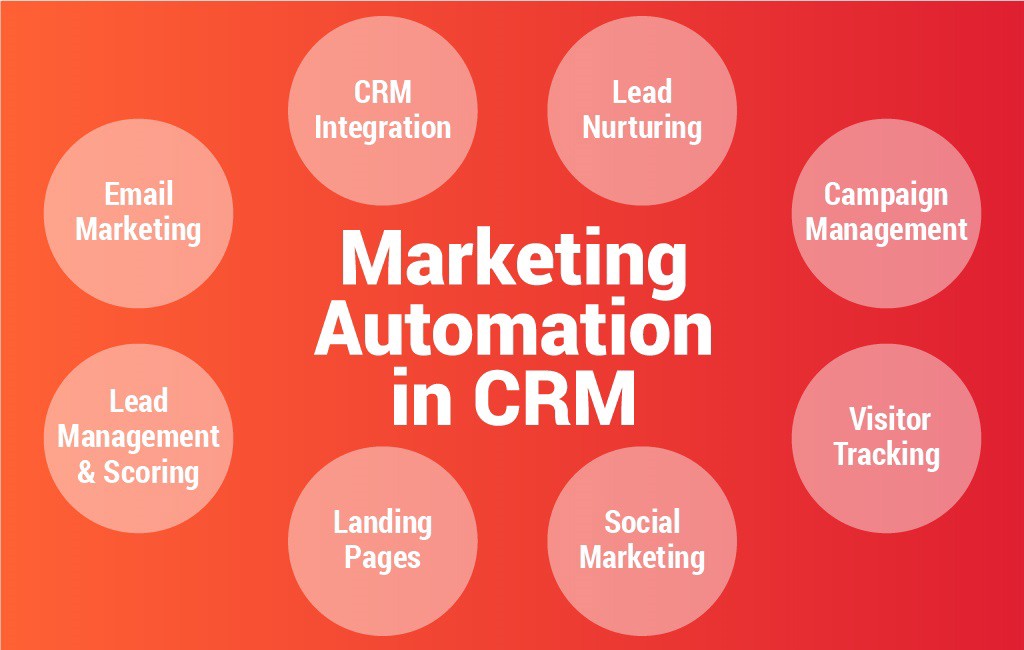
Unlocking the tangible benefits of marketing automation with CRM becomes much clearer through real-world examples. Organizations across industries have leveraged integrated automation to improve lead management, boost sales effectiveness, and deliver tailored customer experiences. By examining these case studies, you can gain actionable insights into the challenges businesses faced, the strategies they adopted, and the measurable impact of automation on their bottom line.
These illustrative cases highlight diverse applications of marketing automation with CRM, ranging from small businesses optimizing their workflows to large enterprises streamlining complex customer journeys. This curated selection emphasizes best practices and lessons learned, providing inspiration and guidance for implementing similar solutions.
Boosting Lead Conversion in B2B Technology Firms
For technology providers, nurturing leads from initial inquiry to closed deal can be a lengthy and intricate process. A mid-sized B2B software company implemented a leading CRM platform with marketing automation capabilities to address lead drop-off and inconsistent follow-up.
“By automating lead scoring and personalized email workflows, the company increased qualified lead conversions by 38% within six months. Automated triggers ensured every inquiry received timely and relevant content, significantly reducing manual follow-up time.”
Key achievements and lessons learned by the company include:
- Automated lead segmentation based on digital behavior enabled targeted nurturing streams.
- Sales teams received real-time notifications when prospects engaged with high-value content, accelerating response times.
- The company faced initial challenges aligning marketing and sales definitions of a ‘qualified lead’; workshops and shared dashboards resolved this, ensuring clarity and consistency across teams.
Enhancing Customer Journeys in Retail E-commerce
Retailers often struggle with cart abandonment and low repeat purchase rates. An online fashion retailer adopted CRM-driven marketing automation to design personalized customer journeys and trigger timely re-engagement campaigns.
“Automated cart recovery emails, personalized recommendations, and loyalty offers resulted in a 22% decrease in cart abandonment and a 15% increase in customer lifetime value over one year.”
Key strategies and implementation insights:
- Integration with e-commerce and payment platforms allowed for real-time, behavior-driven messaging.
- Dynamic segmentation powered by CRM data enabled highly relevant product suggestions based on browsing and purchase history.
- Challenges included ensuring compliance with privacy regulations concerning customer data; the retailer partnered with legal advisors to update consent management and opt-out processes.
Streamlining Fundraising for Nonprofit Organizations
Nonprofits must communicate effectively with donors and volunteers while managing limited resources. A national charity implemented marketing automation tied to their CRM to strengthen donor engagement and fundraising outcomes.
“Personalized donation appeals and automated follow-up campaigns led to a 27% rise in recurring donations and improved donor retention rates.”
Core elements of their approach:
- Donor journeys were mapped to automate thank-you messages, event invitations, and impact updates based on giving history tracked in the CRM.
- Staff were trained to use automation templates, freeing up time for in-person outreach to major donors.
- Early on, the nonprofit struggled with data silos across departments; consolidating contact records into a unified CRM database resolved communication inconsistencies.
Accelerating Sales Cycles in Financial Services
Financial advisors and institutions depend on timely, compliant communication with prospects. A regional bank adopted CRM-powered marketing automation to reduce manual outreach and ensure regulatory adherence.
“Automated onboarding emails, educational drip campaigns, and event-triggered compliance messaging shortened their average sales cycle by 19% and improved cross-sell rates.”
Implementation highlights:
- Integration with customer data sources enabled customized financial education series targeting specific customer segments.
- Automated reminders ensured that follow-up tasks and regulatory disclosures were never missed, reducing risk and administrative overhead.
- The bank initially encountered resistance from staff wary of automation replacing personal service; leadership responded with training and clear communication on how automation supports (rather than replaces) relationship building.
Final Thoughts
In summary, leveraging marketing automation with CRM empowers teams to work smarter, not harder, by unifying processes, enhancing communication, and delivering personalized customer journeys. By adopting the strategies, best practices, and technological advancements discussed here, your business can achieve greater alignment between marketing and sales, unlock valuable insights, and drive sustainable growth in a competitive market. Now is the perfect time to start your automation journey and see the difference it makes.
Top FAQs
What is the main benefit of using marketing automation with CRM?
The main benefit is streamlining and aligning marketing and sales activities, allowing teams to efficiently manage leads, personalize communications, and track performance from one centralized platform.
Do I need technical expertise to set up marketing automation with CRM?
Most modern CRM platforms offer user-friendly interfaces, templates, and support, making it easy for non-technical users to create and manage automated campaigns. However, more advanced customization may require some technical knowledge.
Can marketing automation with CRM improve customer retention?
Yes, by automating follow-ups, segmenting audiences, and personalizing communications, businesses can engage customers more effectively and nurture long-term relationships.
How can I measure the success of my automated campaigns?
You can use built-in CRM analytics dashboards to monitor metrics such as lead conversions, email engagement, sales pipeline progress, and overall campaign ROI.
Is it possible to integrate marketing automation with other business tools?
Absolutely. Most CRM systems support integrations with email marketing, social media, e-commerce, and webinar platforms, enabling a unified workflow across all your business tools.

